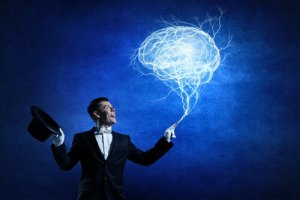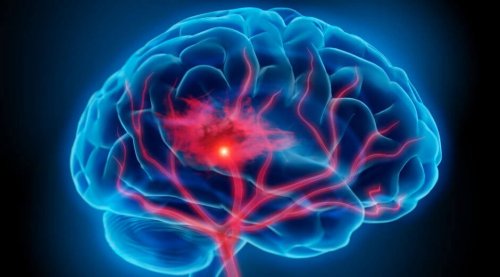Magic and the Brain: How Are They Related?

The curtain opens. A magician shows the audience an empty bag. Several audience members examine the bag and declare it to be ordinary and that there’s nothing suspicious about it. With a few waves of his hand, the magician pulls an egg out of the bag. How did he do it? Was the bag really empty? Are the hands quicker than the eyes? Researchers have been studying the relationship between magic and the brain for a long time.
When we talk about magic, we’re talking about illusions, not black magic. Magic is an art, just like painting, sculpting, or literature. It’s the art of tricking the senses with magic tricks.
Magic and the brain are intimately connected. After all, magic is the illusion of perception and perception is produced by the brain.
Magic is in the brain
It’s very interesting how audience members of a magic show are willingly deceived. There’s an unspoken agreement between the magician and the audience that, during the show, the audience members will suspend their disbelief.
You know that magicians play mental games and that their magic isn’t real, but you still enjoy the moment. That’s just how it goes. Neurologists and psychologists find another use for this art of creating magical illusions. They study perception, attention, and memory, among other processes. In other words, they study the brain’s limits.
Some scientists have begun to collaborate with magicians, thus joining these two traditional and seemingly opposing disciplines. We say “seemingly opposing” because, in reality, they aren’t so different. Magic and the brain are intimately connected. Magic is the illusion of perception and perception occurs in the brain.
Scientists are trying to understand the neuronal correlative of illusions. They’re also trying to understand the moments when objective and subjective reality don’t coincide. That will allow them to clarify the operations and mechanisms the brain uses to construct your experience of reality.

Magic and the brain: creating an illusion
Illusions exist; we see them and enjoy them. But why do they exist? Basically, they exist because of the limitations of the human brain. After all, the brain isn’t infinite. Your brain can only reach a certain size because it has to fit inside your skull. It also has a limited number of neurons and neural pathways. That means that your perception, just like other psychological processes, is limited.
When your brain interprets reality, it takes shortcuts. It creates simulations and masks reality. Most of the time, it’s very good at this. However, other times, it creates something that doesn’t exist. That’s when an illusion is born.
The brain isn’t capable of processing everything for different reasons. We start with two-dimensional images and mentally assemble three-dimensional ones. The brain does this by looking for the most likely solution, which sometimes triggers illusions.
Not only that, but the brain uses up a lot of energy and is fairly slow. Although it only takes up 3% of your body, it consistently consumes 30% of your total energy. To deal with this, the brain tries to predict what’s going to happen based on what it knows about the past.
The invisible coin experiment
Let’s explain an experiment from magician Mac King. He throws a coin from his right hand to his left. Then, he opens the receiving hand, the left, and there’s no coin there. Apparently, it disappeared. The truth is that the coin never left his right hand, but the audience swears that they saw the coin fly through the air.
Why does this happen? First of all, the movement that the magician makes is identical to the movement he would have made if he had actually tossed the coin. Secondly, the neural mechanisms of implicit movement make you believe that you’ve seen the movement. It’s like when you pretend to throw a dog a stick. The magician fools your brain in the same way.
Magic tricks are very useful to scientists and can reveal things about how the brain works. But what do magicians get out of this collaboration? Well, for one, it has helped them understand the value of magic tricks.

As you can see (and this isn’t an illusion), magicians help science and science helps magicians. Our brains are imperfect. Thanks to that imperfection, you can see things that don’t exist and not see things that do. Magic and the brain are intimately connected. Without the brain, magic couldn’t exist.
If you want to know more about this subject, we recommend you to read the book Sleights of Mind: What the Neuroscience of Magic Reveals About Our Everyday Deceptions by Sandra Blakeslee, Stephen Macknik, and Susana Martínez-Conde.
This text is provided for informational purposes only and does not replace consultation with a professional. If in doubt, consult your specialist.








